
Paul Anderson playlist of videos that can be used in an AP Environmental Science Class
- Subject:
- Applied Science
- Environmental Science
- Material Type:
- Lecture
- Provider:
- Bozeman Science
- Date Added:
- 11/23/2016

Paul Anderson playlist of videos that can be used in an AP Environmental Science Class
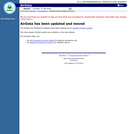
The AirData Web site gives you access to air pollution data for the entire United States. Want to know the highest ozone level measured in your state last year? Ever wonder where air pollution monitoring sites are located? Are there sources of air pollution in your town? You can find out here! AirData produces reports and maps of air pollution data based on criteria that you specify.
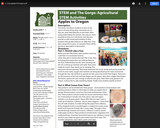
In this lesson, students are introduced to trees and the many things we commonly use that come from trees. Includes introductory movement activity, guided discussion, a matching game, and fun facts.
NGSS: Partially meets 1-LS1-1, 2-PS1-1, 2-PS1-2
Common Core: W.2.7, W.2.8
Time: 30 minutes
Materials: "Apples to Oregon" book and three paper lunch bags labled: wood, food, cellulose.

This kit is aimed at teachers and their pupils at the end of primary school education living in areas affected by or under threat from desertification.
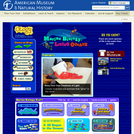
This OLogy activity shows kids that there are simple, but very helpful things they can do to protect the ocean -- even if they live nowhere near the water. The activity opens by introducing kids to Gabby, a future marine biologist who wants to study dolphins. Then it has a checklist of 14 ways kids can be ocean helpers that includes asking for tap water instead of bottled water and leaving plants and animals where they find them.

Satellite observations that detect and map fires provide important insight into the widespread nature of fire activity around the world. This visualization, which shows global satellite observations of fires in 2002 and 2003, goes on to focus on a region where fire plays a dominant role in the landscape: Southern California. The wildfires that roared through Southern California in the autumns of 2003 and 2007 were particularly fast-burning and destructive because people have actively suppressed fires in the region where residential development is expanding further and further into wild land areas.

The University of California, Irvine Extension, supported by generous grants from the William and Flora Hewlett Foundation and The Boeing Company, is developing online courses to prepare science and mathematics teachers for the California Subject Examinations for Teachers (CSET).
UC Irvine Extension's online test-preparation courses correspond with the 10 CSET science subtests and three CSET mathematics subtests.

How genetics can add to our understanding of cognition, language, emotion, personality, and behavior. Use of gene mapping to estimate risk factors for psychological disorders and variation in behavioral and personality traits. Mendelian genetics, genetic mapping techniques, and statistical analysis of large populations and their application to particular studies in behavioral genetics. Topics also include environmental influence on genetic programs, evolutionary genetics, and the larger scientific, social, ethical, and philosophical implications.
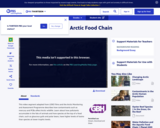
The levels of contaminants found in particular animals vary widely depending on where they fit into the Arctic food chain, as described in this video segment adapted from LOKE Films and the Arctic Monitoring and Assessment Programme.
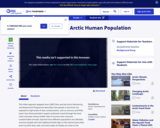
In this video segment adapted from LOKE Films and the Arctic Monitoring and Assessment Programme, learn how human populations in the Arctic are affected by industrial contaminants in the food chain.

This video segment from NOVA: A Desert Place describes the physical characteristics and organisms that define the desert biome.
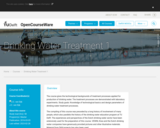
The course provides the technological background of treatment processes applied for production of drinking water. Treatment processes are demonstrated with laboratory experiments.

This course deals with the design of drinking water treatment plants. We discuss theory and design exercises.

Environmental Technology Verification (ETV) is an initiative that provides third-party verification of the performance claims made by technology manufacturers. By using Statement of Verification, which is the product of a successful ETV process, ETV provides credible information on the new technology.7ETV4INNOVATION has been a two-and-a-half long EC funded VET Strategic Partnership project under Erasmus + programme. It has been designed with the aim to support the development and the implementation of an innovative practice and a new training path in the field of Environmental Technology Verification (ETV). ETV4INNOVATION course includes three modules:Basic aspects of verification of environmental technologyThe ETV program as a commercial tool on domestic and international marketsPractical aspects of the ETV verification

This kit is aimed at teachers and their pupils at the end of primary school education living in areas affected by or under threat from desertification.

This OLogy board game is a fun-filled way to help kids understand that once a species is extinct, it's gone forever. And that there are lots of things they can do to help preserve biodiversity. The activity begins by introducing kids to the difference between endangered and extinct animals, as well as to the U.S.'s Endangered Species Act. A colorful game board is included as a printable PDF file. You'll need a pair of dice and a marker of your choosing for each player. Simple directions for assembling the game board and playing the game are included on a single page.

Students learn about the wonderful and fascinating country of China, and its environmental challenges that require engineering solutions, many in the form of increased energy efficiency, the incorporation of renewable energy, and new engineering developments for urban and rural areas. China is fast becoming an extremely influential factor in our world today, and will likely have a large role in shaping the decades ahead. China is the world's largest energy consumer and the largest producer of carbon dioxide emissions, leading engineers and scientists to be concerned about the role these emissions play in rural and urban public and environmental health, as well as in global climate change. Through exploring some sources of air pollution, appropriate housing for different climate zones, and the types of renewable energy, the lessons and activities of this unit present ways that engineers are helping people in China, using an approach to cleaner, smarter, healthier and more-efficient ways of living that apply to people wherever they live.

Students will be introduced to Environmental Crime and Law. Students will consider critical questions such as, why study environmental harm? Should these harms be considered crimes? Furthermore, where might criminal justice and environmental degradation intersect? A theoretical foundation will be surveyed as well as a short historical analysis of environmental movements. The course will then turn toward looking at Environmental Crime Investigation, which organizations and databases are used for data collection, and some future issues and challenges that may emerge.

The Network of Conservation Educators and Practitioners (NCEP) produces peer-reviewed teaching resources summarizing topics on conservation biology. Each module contains a synthesis document outlining the main concepts of a subject, a modifiable visual presentation, classroom exercises and solutions, teaching notes, and interdisciplinary case studies. For more information please visit where all NCEP modules are available free of charge.

The Network of Conservation Educators and Practitioners (NCEP) produces peer-reviewed teaching resources summarizing topics on conservation biology. Each module contains a synthesis document outlining the main concepts of a subject, a modifiable visual presentation, classroom exercises and solutions, teaching notes, and interdisciplinary case studies. For more information please visit where all NCEP modules are available free of charge.